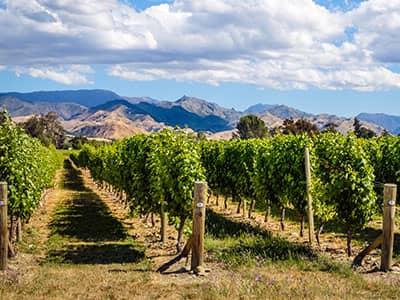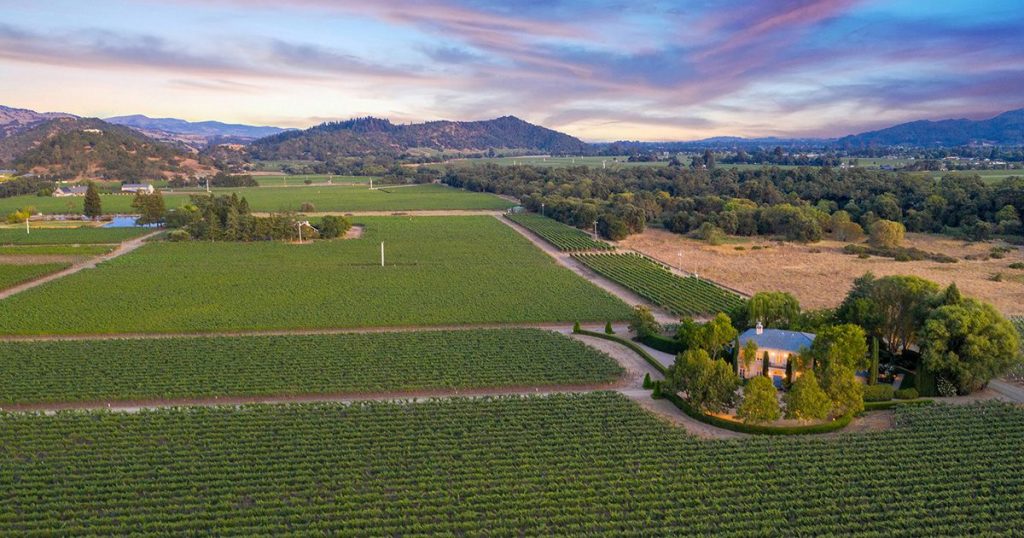Investing in a vineyard can bring tax relief benefits, but the rules are complex and varied. I have highlighted some tax benefits that can be available to you if you buy a vineyard in Wine Country. The American Viticultural Area (AVA), once properly valuated, can help to reduce your tax payments each year. The more valuable the AVA in which your property is located, the greater your potential tax benefits.
American Viticultural Area (AVA), Vineyards, and Wineries
 Understanding the tax implications of an AVA for a vineyard or a winery is complex. The AVA is a geographic area. Napa Valley is its own AVA, the first established in California back in 1981, and the second within the nation. Within the Valley are 16 nested AVAs, including Oakville, Rutherford, Saint Helena, Mt. Veeder, Diamond Mountain, Howell Mountain, and Spring Mountain. A nested AVA is also called a sub-appellation, and it refers to a subdivision of a larger AVA. In total, California has 139 AVAs statewide, and each has its own unique profile and nature which influences the varietals which are grown in the area.
Understanding the tax implications of an AVA for a vineyard or a winery is complex. The AVA is a geographic area. Napa Valley is its own AVA, the first established in California back in 1981, and the second within the nation. Within the Valley are 16 nested AVAs, including Oakville, Rutherford, Saint Helena, Mt. Veeder, Diamond Mountain, Howell Mountain, and Spring Mountain. A nested AVA is also called a sub-appellation, and it refers to a subdivision of a larger AVA. In total, California has 139 AVAs statewide, and each has its own unique profile and nature which influences the varietals which are grown in the area.
The Alcohol and Tobacco Tax and Trade Bureau (TTB), which is part of the Bureau of Alcohol, Tobacco, and Firearms (ATF) is the government organization that designates AVAs and defines their geographic areas.
The AVA isn’t just important for grape growing and wine production, although the characteristics of the terroir of each AVA in Napa Valley are special and unique. It also influences how grapes and wines are priced, and how growers and wineries can structure their finances, profits, and taxes.
AVA Valuation
The value of the AVA can affect the value of your property. This is the reason that AVA valuation can help to reduce tax burdens.
Land cannot be depreciated for tax purposes, but vineyards can be. The tax advantages of valuing an AVA are different; they are considered intangible assets shared by the wineries and vineyards that are located within their boundaries. For tax purposes, the AVA’s value must be assessed, documented, and considered separately from the value of your actual land, vineyards, and improvements.
Tax Implications and AVA Valuation
When you buy a vineyard, you will also acquire the intangible value of the AVA in which the vineyard is located. This value is referred to as “intangible” because it is similar to a brand name or a trademark.
When you purchase a vineyard or winery which makes wines in a specific AVA, you should ensure that the AVA’s intangible value is measured and documented as part of your purchase. In order to qualify for a tax benefit, at least 85% of a winery’s bottles must come from a specific AVA.
If you don’t have an AVA valuation at the time of purchase, it can be done later on, but it’s optimal to have the valuation agreed upon by the buyer and seller’s tax advisors at the close of escrow or no later than the end of the tax year.
Amortizing the Value
Once you have the AVA valuation, you can amortize it over fifteen years and deduct a portion of depreciation each year with your annual taxes. This is a tremendous tax benefit dating back to 1993. In 2010, the IRS issued a memorandum that made AVA valuations amortizable and classified them as similar to licenses, grants, or permits issued by government bodies. Another similar example of an amortizable “intangible” asset is a liquor license. The applicable portion of the Federal tax code is Section 197, and also included in the same portion of the tax code are franchises, trademarks, or trade names.
The Internal Revenue Service has no official guidelines for how to arrive at an official valuation from your American Viticultural Area, but there are industry best-practices. It’s very important to work with experienced wine industry consultants who can prepare strong AVA appraisals which are easily supported by your tax accountants and will also offer you significant tax benefits each year.
Potential Tax Benefits
The wine industry is cyclical and varies from year to year, but once you have an AVA valuation that is arrived at using valid principles that are similar to merger and acquisition (M & A) valuations, you will have a basis for annual amortization and reduction of your taxable income.
One tax accountant who specializes in vineyards offers a simple example of how the tax benefits can work. For example, say you purchase a $10 million Napa Valley vineyard in the AVA, and half of the property’s appraised value, or $5 million, lies in its vineyard. Vineyards themselves can be depreciated over a 20-year period, so the valuation from the AVA will apply to the land and intangible value of the other portions of the property — it is an additional form of depreciation.
The AVA valuator may calculate that the valuation represents 40% of the non-vineyard, non-land, intangible value of the property, or $2 million. You may expense this valuation over a 15-year period at an amount of $133,333 per year, reducing the amount of taxable income on the property that you have each year over the 15 years.
American Viticultural Area Best Practices
Unlike property appraisals, one important thing I’d like to convey about AVA valuations is that they should be prepared using business financial principles. The Internal Revenue Service has issued no formal guidelines for AVA valuations and how they should be recorded for tax purposes. Because the AVA valuation represents something “intangible,” like a trademark, and it can be interpreted or valued differently, as well as vary from year to year, it’s crucial to valuate using proper accounting principles with comparison values for other properties within the AVA and records of grape crush prices for different AVAs. Consider the valuation as part of your purchase when you’re looking at properties in Wine Country and be aware that the AVAs with higher vineyard and grape prices almost certainly will carry a higher potential valuation than those in AVAs which command lower prices.
Once again, I am not a tax professional or advisor, so you must consult your tax professional for advice on the information in this blog. I am sharing this information because the majority of vineyard owners are not aware that AVAs have potential tax benefits.




